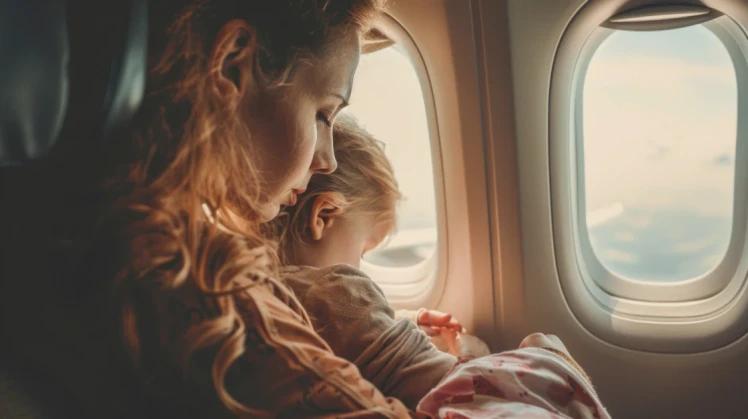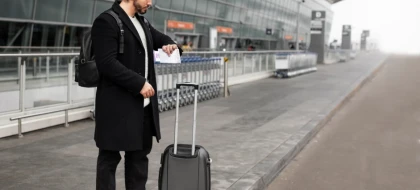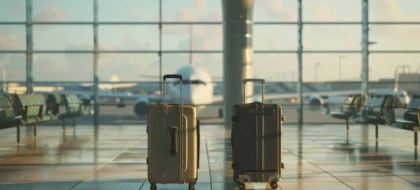How Soon Can a Baby Fly?
Most airlines allow newborns to fly from as early as 7 days old, although some may permit travel just 48 hours after birth with a doctor’s note. Always check with your specific carrier, as requirements vary. Airlines like Turkish Airlines and Ural Airlines require a pediatrician's clearance for babies younger than a week.
Is It Safe to Fly with a Newborn?
Generally, yes — but always consult your pediatrician before booking. Infants are sensitive to pressure changes, so it's important to plan for takeoff and landing. Offering a pacifier or bottle during ascent and descent helps minimize ear discomfort by encouraging swallowing.
What’s It Like to Fly with an Infant?
Babies need familiarity and comfort during flights. Stick to their regular routine if possible and bring items like a swaddle, pacifier, and favorite toy. Some airlines provide bassinets on long-haul flights, but they’re limited and need to be reserved in advance.
How Much Does a Baby’s Plane Ticket Cost?
For domestic flights (e.g. within the U.S. or Russia), infants under 2 years old usually fly for free if they don’t occupy a seat. For international routes, discounts of 90% or more are common. However, if you're traveling alone with two infants, one will need a paid child fare with an assigned seat.
Can Children Fly Alone?
Kids over 5 can fly without a parent under the airline's unaccompanied minor program. A staff member assists them through check-in, boarding, and arrival. This service is mandatory for kids up to 12, and often optional for teens up to 16. Fees vary by airline.
How to Keep a Baby Calm During a Flight
Babies often cry due to pressure changes, unfamiliar noise, or tiredness. Give them a bottle, breastfeed, or use a pacifier during takeoff and landing. Noise-canceling headphones or baby earplugs can help if engine sounds are distressing. Favorite blankets and toys can also soothe nerves and encourage sleep.
Helping Your Baby Sleep on the Plane
To make sleeping easier:
– Time the flight around naps. Try to book flights during regular nap times.
– Recreate bedtime routines. Bring familiar items like their bedtime toy or blanket.
– Let them burn energy. For toddlers, schedule pre-flight playtime so they’re ready to sleep onboard.
If your child struggles to nap in transit, book morning or early afternoon flights so they can rest well before and after the trip.
How to Change a Diaper Mid-Flight
Always pack spare diapers and baby wipes in your carry-on. Airplane bathrooms are usually equipped with fold-down changing tables. Use disposable changing pads and throw used diapers in the bin provided. Avoid changing diapers at your seat to respect fellow passengers.
What Documents Are Needed for Flying with a Baby?
For domestic travel, a birth certificate is enough. For international travel, prepare:
– Birth certificate
– Child’s passport
– Visa (e.g. for EU countries)
– Letter of consent if traveling with only one parent
Do You Need to Check a Stroller?
Most airlines let you bring a stroller free of charge. If it’s compact and foldable (e.g. within 55×40×23 cm), it may qualify as carry-on. Otherwise, you can check it at the gate or during check-in. Airlines like Pobeda and S7 have specific size requirements, so confirm before the flight.
Baby Travel Checklist: What to Pack and Plan
– Doctor’s clearance if your baby is under 7 days old
– ID documents: birth certificate, passport, visas, parental consent
– Pacifier or bottle to help with ear pressure
– Favorite toys, blanket, and a change of clothes
– Diapers, wipes, and changing pad
– Book flights that match your child’s sleep schedule
– Reserve bassinets in advance if available
Flying with a baby can seem overwhelming, but with good planning, it becomes a memorable (and even peaceful) family experience.




-detail-desktop-list-desktop.webp)
